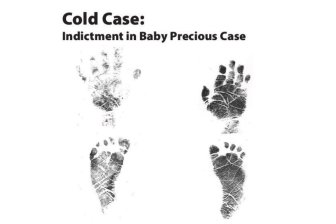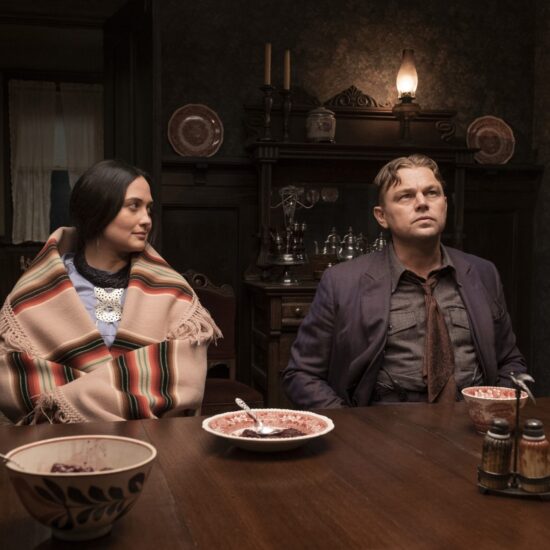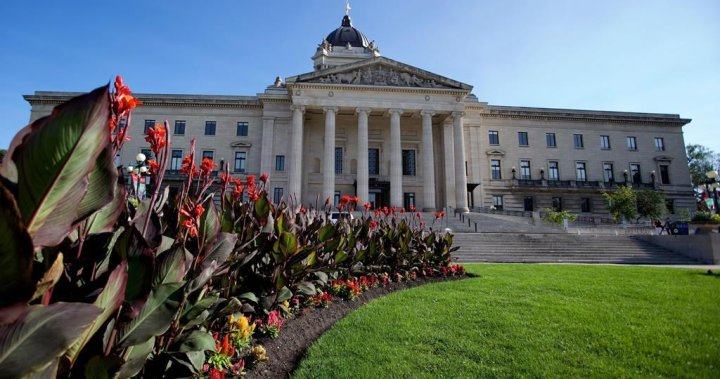
No matter how you look at it, Manitoba’s Oct. 3 election will be historic.
Either Heather Stefanson — the first woman to serve as Manitoba premier — will be re-elected, or NDP leader Wab Kinew will become the first premier of First Nations descent and the first premier with Indigenous heritage in almost 150 years.
…and that’s not forgetting Dougald Lamont and the Manitoba Liberals, who, if they pull out an underdog victory at the polls, would form government for the first time in a century (excluding two Liberal-Progressive coalitions in the 1940s).
The ongoing debate around whether Manitoba founder Louis Riel should be considered the province’s first premier aside, the province has had a number of colourful characters serving as premier, government leader, or other titles dating back to 1870.
How many do you know?
Heather Stefanson
Nov. 2021-present
Progressive Conservative
Manitoba PC leader and Premier Heather Stefanson announces the start of the provincial election process with supporters and candidates in Winnipeg, Manitoba, Tuesday, September 5, 2023.
THE CANADIAN PRESS / John Woods
The first woman to hold Manitoba’s highest office, Heather Stefanson, 53, has served as the province’s 24th premier since Nov. 2, 2021.
A longtime MLA for the upscale Tuxedo riding, Stefanson was first elected in a 2000 byelection, following the retirement of MLA Gary Filmon, himself a former premier. She was re-elected by a significant margin in 2003, 2007, 2011, 2016, and 2019.

During her time in office, Stefanson has served as Attorney General of Manitoba, and as a cabinet minister with portfolios including justice, families, health, and seniors care.
She was elected as leader of the Progressive Conservatives after Brian Pallister announced his retirement in 2021.
Throughout her entire tenure as premier, Stefanson has ranked at the bottom of quarterly provincial leaders’ approval polls, although her highest approval rating to date came a month prior to October’s election.
Kelvin Goertzen
(Interim) Sept. 2021-Nov. 2021
Progressive Conservative
Premier Kelvin Goertzen speaks to the media during his first day in office as the premier of Manitoba at the Legislative Building in Winnipeg, Wednesday, Sept. 1, 2021.
THE CANADIAN PRESS/David Lipnowski
Serving as premier for only two months in 2021, current justice minister Kelvin Goertzen filled an interim role between the retirement of Brian Pallister and the appointment of Heather Stefanson.
Representing his home riding, the staunchly conservative southern Manitoba district of Steinbach, since 2003, Goertzen has been re-elected handily four times, including taking a whopping 89 per cent of the vote in 2016.

Goertzen, 54, has served in cabinet as minister of health, seniors and active living, education, justice (and Attorney General), and intergovernmental affairs.
Brian Pallister
(2016-2021)
Progressive Conservative
Manitoba Premier Brian Pallister makes an announcement in front of the Dome Building in Brandon, Man., Tuesday, Aug. 10, 2021. THE CANADIAN PRESS/David Lipnowski.
THE CANADIAN PRESS/David Lipnowski
A familiar name and face in Manitoba politics, 22nd premier Brian Pallister served as premier from May 2016 to his retirement from politics in September of 2021.
Pallister, 69, first represented the Portage la Prairie riding provincially after winning a 1992 by-election as a member of then-premier Gary Filmon’s PC government. He was re-elected in 1995, but resigned his seat two years later to run unsuccessfully as a Progressive Conservative on the federal level.
After a failed bid to win the federal PC leadership, Pallister was elected to the House of Commons as a Canadian Alliance candidate in 2000. After the Alliance and Conservative Party of Canada merged, Pallister was re-elected in 2004 as a Conservative MP and again in 2006.

After announcing he wouldn’t run for re-election federally in 2008, Pallister returned to the provincial arena as Progressive Conservative leader and MLA for Fort Whyte in 2012. He was elected premier in 2016, defeating incumbent Greg Selinger and ending almost 17 years of NDP government in Manitoba. Pallister was re-elected in 2019 to a second majority.
Prior to his 2021 retirement, Pallister faced criticism for his government’s handling of the COVID-19 pandemic, as well as controversial comments about Indigenous people and residential schools.
Greg Selinger
(2009-2016)
NDP
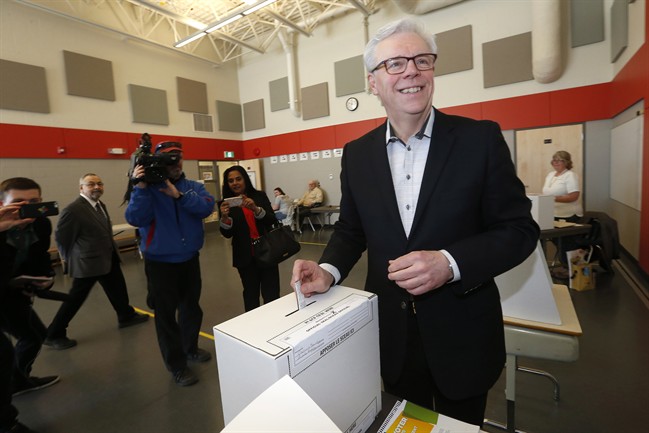
Manitoba premier Greg Selinger votes in the 2016 provincial election.
File
Best-known — prior to becoming premier — as Manitoba’s finance minister in the government of his predecessor, 72-year-old Greg Selinger served as MLA for the St. Boniface riding for almost two decades.
The Saskatchewan-born Selinger first served at the municipal level, being elected to Winnipeg city council in 1989. He later ran for mayor of Winnipeg in 1992, finishing second to Susan Thompson in a field of 17 candidates.
After a short political hiatus, Selinger was first elected to the Manitoba Legislature as an NDP candidate in 1999, serving as finance minister under premier Gary Doer for the next 10 years. He was re-elected handily in 2003 and 2007, before running for NDP leader in 2009.
_MMC_LATE_848x480_1165953603645.jpg?w=1040&quality=70&strip=all)
Selinger won the party’s leadership race and was sworn in as premier in October of that year. He led the NDP to a fourth-straight majority government two years later in the 2011 election.
The premier’s broken promise about an increase to the PST in 2013 led to dissent in his NDP caucus, and the resignation of five cabinet ministers amid calls for Selinger to step down. In the 2016 election, Selinger’s government was badly beaten by Brian Pallister and the Progressive Conservatives, causing him to resign as leader and ultimately retire from politics in 2018.
Gary Doer
(1999-2009)
NDP
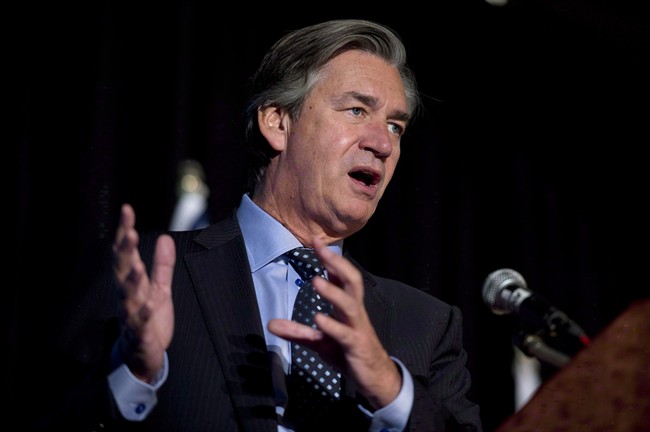
Canadian Ambassador to the United States Gary Doer seen here addressing the Vancouver Board of Trade in Vancouver in 2012.
THE CANADIAN PRESS/Jonathan Hayward
Currently making headlines for his public support of Wab Kinew’s campaign in the 2023 election, Gary Doer served as premier for a decade, later becoming Canada’s ambassador to the United States.
Winnipeg-born Doer, 75, first ran for provincial office in the 1986 election, winning the Concordia seat in the NDP government of premier Howard Pawley. He was elected leader of the beleagured party two years later following Pawley’s defeat and resignation.
Doer was re-elected as Concordia MLA in 1988, 1990, and 1995, and with his party’s win in the 1999 election, became premier. He received strong public support for much of his tenure, being rated as Canada’s most popular premier in four consecutive polls from 2003-2006.

Seen by some as more centrist than many of his NDP colleagues may have contributed to Doer’s working relationship with Conservative prime minister Stephen Harper. A day after announcing, in August 2008, that he wouldn’t run for re-election, Doer was appointed by Harper to the U.S. ambassadorship, a position he held until 2016.
His former constituency assistant, Matt Wiebe, currently holds Doer’s former Concordia seat in the Manitoba Legislature.
Gary Filmon
(1988-1999)
Progressive Conservative
Premiers ham it up following the conclusion of the Canada Round of constitutional negotiations in Ottawa Aug. 22, 1992. (L to R) Gary Filmon of Manitoba, Clyde Wells of Newfoundland, Don Getty of Alberta, Frank McKenna of New Brunswick, Tony Penikett of NWT, and Roy Romanow of Saskatchewan. (CP PHOTO/ Bill Grimshaw).
CP PHOTO/ Bill Grimshaw
Premier for 11 years and leader of Manitoba’s Progressive Conservatives for almost two decades, Gary Filmon, 81, was Manitoba’s final PC premier of the 20th Century.
First elected to Winnipeg City Council in 1975, Filmon ran provincially in a 1979 by-election and was elected MLA for River Heights. He became minister of consumer and corporate affairs and minister of the environment under premier Sterling Lyon.
Filmon — representing the new riding of Tuxedo — succeeded Lyon as party leader in 1983, narrowly losing a provincial election three years later. He became premier in 1988 when Howard Pawley’s government fell due to a confidence vote.

Filmon held onto the premiership with majority governments in both 1990 and and 1995, and his government was in power during Manitoba’s historic “flood of the century” in 1997.
In the late ’90s, a vote-rigging scandal involving some members of his party contributed to a decline in his popularity, and the Progressive Conservatives were defeated by Gary Doer’s NDP in 1999.
Filmon resigned as party leader and MLA in 2000. His wife, Janice Filmon, served as Manitoba’s Lieutenant-Governor from 2015-2022.
Howard Pawley
(1981-1988)
NDP
Then-Manitoba Premier Howard Pawley is shown in this 1984 file photo.
THE CANADIAN PRESS/Chuck Stoody
Howard Pawley, who died in 2015 at age 81, began his political career with the Manitoba Co-operative Commonwealth Federation (CCF) — the predecessor to the NDP — becoming its youngest-ever president in 1957.
After a number of unsuccessful attempts at running both federally and provincially in rural Manitoba ridings, Pawley was elected as MLA for Selkirk — a job he ended up holding for the NDP for almost two decades.
Pawley served in a number of ministerial roles in the government of premier Ed Schreyer — including public works and urban affairs, and as Attorney General. Most notably, he chaired a committee that brought government-run auto insurance to Manitoba, and served as the first minister responsible for Manitoba Public Insurance.
He replaced Schreyer as NDP leader in 1979, becoming premier in 1981. Re-elected in 1986, struggles over issues like expanding French-language rights, as well as a spike in auto insurance premiums, caused Pawley to dip in popularity, and a 1988 vote against the budget by fellow NDP MLA Jim Walding toppled the government and led to Pawley’s resignation.
After a final unsuccessful bid for a federal seat, Pawley returned to his home province of Ontario and became a political science prof at the University of Windsor until his retirement.
Sterling Lyon
(1977-1981)
Progressive Conservative

Former premier Sterling Lyon.
University of Winnipeg
Born in Ontario but raised in Portage la Prairie, Man., Sterling Lyon was Manitoba’s first — and, to date, only — single-term premier.
First elected as Progressive Conservative MLA for Fort Garry in 1958, he served in various ministerial roles in premier Duff Roblin’s government, as well as Attorney General — a role he held for almost a decade.
Choosing not to seek re-election in 1969, Lyon ventured into the federal arena in 1974, finishing second to Liberal James A. Richardson in the race for Winnipeg South.
He returned to provincial politics in 1975, becoming Progressive Conservative leader and winning a 1976 by-election in the Souris-Killarney riding. In 1977, moving to the Charleswood riding, Lyon’s PCs defeated NDP incumbent Ed Schreyer to form government.
As premier, Lyon is perhaps best-known for his efforts to include the notwithstanding clause in Canada’s Charter of Rights and Freedoms.
After one term, his government was defeated, and he stepped down as Tory leader in 1983, to be replaced by future premier Gary Filmon. Post-politics, Lyon was appointed to the Manitoba Court of Appeal and served there until his 2002 retirement. He died in 2010 at age 83. Winnipeg’s Sterling Lyon Parkway is named in his honour.
Ed Schreyer
(1969-1977)
NDP
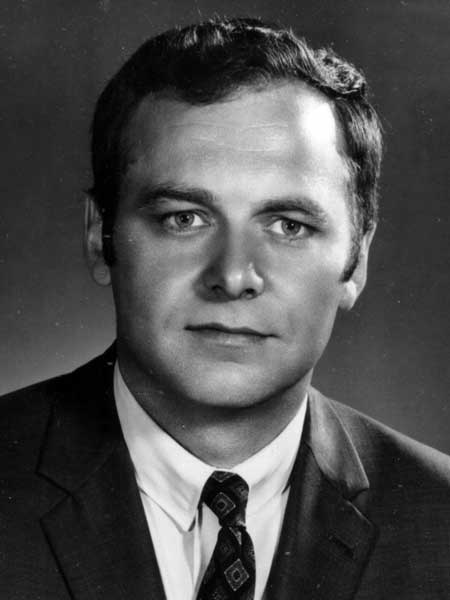
Former Manitoba premier Ed Schreyer.
Manitoba Historical Society
Manitoba’s first NDP premier, Edward Schreyer is currently the oldest living former leader of the province at 87 years old, and perhaps the most decorated, as he also served as Governor General of Canada from 1979-1984.
Born in Beausejour, Man., his political career began in 1958 when he was elected as MLA for Brokenhead — setting a record for the time as the youngest person ever elected to the Manitoba legislature at 22.
Schreyer represented the Canadian Commonwealth Federation (CCF), the predecessor to the NDP, and served in the legislature until 1965, when he made the jump to federal politics as Member of Parliament for the riding of Springfield, which was later dissolved into the Selkirk constituency, which he represented until 1969.
Upon returning to the provincial arena, Schreyer was chosen as leader of the Manitoba NDP, elected in the Winnipeg riding of Rossmere. After his party’s victory in the 1969 provincial election, he was sworn in as premier, also winning re-election in 1973. Schreyer’s premiership made significant movement toward the implementation of Pharmacare, the use of hydroelectricity, and public auto insurance.
In 1977, he was defeated by Sterling Lyon and the Progressive Conservatives, but he stayed on to lead the opposition NDP until he was tapped by prime minister Pierre Trudeau to become the country’s Governor General two years later.
After completing his vice-regal duties, Schreyer took a diplomatic post as High Commissioner to Australia, Papua New Guinea, the Solomon Islands, and Vanuatu, before returning to Manitoba and eventually becoming chancellor of Brandon University.
As recently as 2006, Schreyer remained politically active, running unsuccessfully for the federal seat of Selkirk-Interlake — a first for a former Governor General.
Walter Weir
(1967-1969)
Progressive Conservative
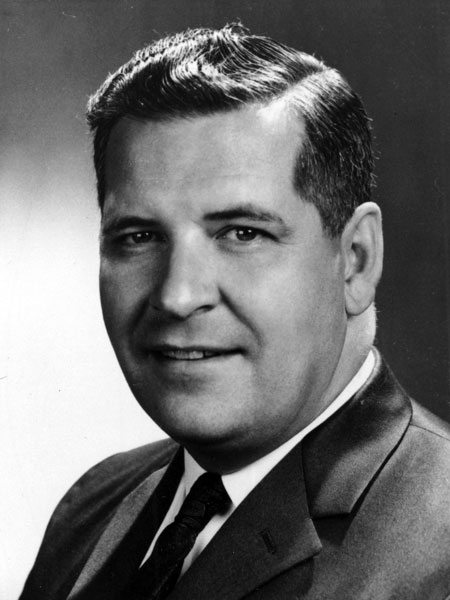
Former Manitoba premier Walter Weir.
Manitoba Historical Society
With an unlikely pre-politics career as an undertaker in Saskatchewan, later owning a funeral home in Minnedosa, Man., Walter Weir initially served on the Minnedosa town council before seeking the Progressive Conservative nomination for the 1958 provincial election — something he didn’t receive until 1959, when he was elected as Minnedosa’s MLA.
Weir served as municipal affairs, public works, and highways minister in Duff Roblin’s government, being re-elected in 1962 and 1966. After Roblin stepped down in pursuit of a federal seat, Weir defeated two other candidates — including future premier Sterling Lyon — to lead the party and become premier.
Opposed to official bilingualism — a topic on which he clashed with prime minister Pierre Trudeau — Weir, emboldened by a series of successful 1969 by-elections, apparently misjudged the public reaction to his views and called an early provincial election later that year. He was defeated by Ed Schreyer and the New Democrats, which led to his 1971 departure from politics and from Manitoba, although he returned to Minnedosa after a five-year stay in Ontario.
Weir died at his Minnedosa home in 1985 at age 55.
Duff Roblin
(1958-1967)
Progressive Conservative
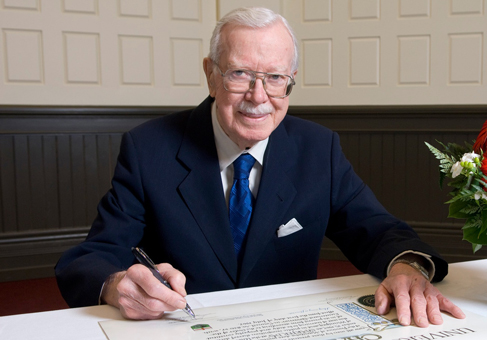
Former Manitoba premier Duff Roblin.
University of Winnipeg
Dufferin Roblin, grandson of Manitoba’s ninth premier, Rodmond Roblin, is a familiar name among many Manitobans today due to his lasting legacy, the Red River Floodway around Winnipeg, colloquially known as “Duff’s Ditch”.
A car dealer and air force wing commander to prior to pursuing politics, Roblin was first elected in the Winnipeg South riding in 1949, as an ‘Independent Progressive Conservative’ in opposition to the coalition government of premier Douglas Lloyd Campbell. Re-elected in 1953, he became premier and MLA for the then-new Winnipeg riding of Wolseley in 1958.
His government was responsible for a number of progressive reforms, including reintroducing French in Manitoba schools, making significant improvements to hospitals, and working to consolidate the municipalities around Winnipeg into a single city.
The floodway, which began under Roblin’s watch in 1962 and was completed the year after he left provincial politics, is estimated to have saved the province tens of billions of dollars in cumulative flood damage.
In 1967, Roblin stepped down from provincial politics to run for leadership of the federal Progressive Conservatives, finishing second, and was soundly defeated in the 1968 federal election in his bid for the Winnipeg South Centre seat. He made a final attempt at election to the House of Commons in 1974 — this time vying for the vote in a Peterborough, Ont. riding — and lost again.
In 1978, prime minister Pierre Trudeau appointed Roblin to Canada’s senate, a role he would serve for the next 14 years. He became leader of the government in the senate with the 1984 election of prime minister Brian Mulroney, and retired at the mandatory age of 75 in 1992.
Roblin died in May 2010 at 92 and is buried in the Elmwood Cemetery. His name lives on in Duff Roblin Provincial Park, and at the University of Manitoba’s Duff Roblin Building.
Douglas Lloyd Campbell
(1948-1958)
Liberal-Progressive

Former Manitoba premier Douglas Lloyd Campbell.
Wikipedia
The longest-tenured MLA in Manitoba history, serving a whopping 47 years in the legislature, Douglas Lloyd Campbell served as premier for almost a decade.
Born in Portage la Prairie, Campbell worked as a farmer and a teacher prior to becoming involved in politics in 1922, when he was elected in the Lakeside riding as a United Farmers of Manitoba candidate. The rurally-focused party governed as the Progressive Party of Canada, and in 1932, merged with the Liberal Party to become Liberal-Progressives.
Campbell was agriculture minister in premier John Bracken’s government, which formed an all-party coalition in 1940. When Bracken, as well as his successor Stuart Garson, made the jump to federal politics, Campbell became only the second premier to have been born in the province of Manitoba when he was sworn into office in 1948.
As premier, Cambpell continued some of Garson’s policies regarding rural electrification and expansion, but was criticized for his “small government” views, which led to the end of the coalition government in 1950. After a hung parliament in 1958 and failed attempts at allying with the Manitoba Co-operative Commonwealth Federation, Campbell resigned.
Post-premiership, Campbell received a number of awards and honours, and died at 99 in 1995.
Stuart Garson
(1943-1948)
Liberal-Progressive
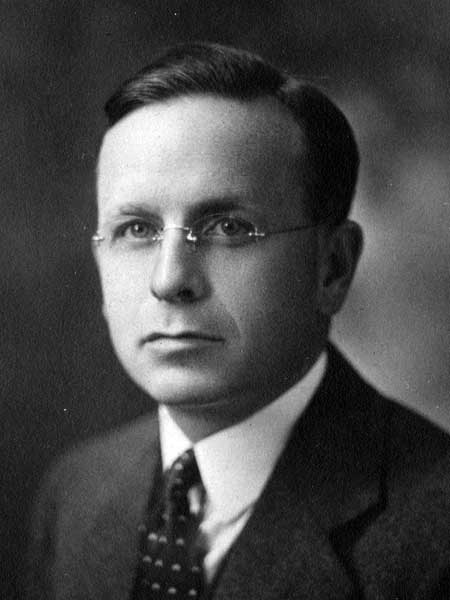
Former Manitoba premier Stuart Garson.
Manitoba Historical Society
Stuart Garson, who moved from Ontario to Manitoba as a young child at the turn of the 20th Century, was a lawyer in Ashern, Man., prior to his entry into provincial politics.
Initially elected in 1928 as a Progressive in the Fairford riding, Garson was a founding member of Manitoba’s Liberal-Progressive coalition in the early 1930s, which led to his being sworn in as premier in 1936.
Leading the province during World War II and in its aftermath, Garson — who also served as provincial treasurer — is remembered for his focus on rural areas of the province, particularly with regard to electrification and highway construction.
Garson followed in his predecessor John Bracken’s footsteps and left the legislature in pursuit of a federal seat. He was elected as MP for Marquette in a 1948 by-election and had a prominent role in prime minister Louis St. Laurent’s government — serving as justice minister, Attorney General, and Solicitor General at various points during his tenure in Parliament.
He was defeated in 1957 and retired from politics to resume his legal practice. Garson died in 1977 and is buried in Winnipeg’s Elmwood Cemetery.
John Bracken
(1922-1943)
Progressive
John Bracken was Manitoba’s 11th premier.
Archives of Manitoba
Manitoba’s longest-serving premier, John Bracken wasn’t chosen as leader until after his party, the United Farmers of Manitoba, were surprise winners of the 1922 provincial election.
The party, which changed its name to the Progressive Party of Manitoba, hadn’t chosen a leader, nor had they fielded a full slate of candidates, as they weren’t expecting to win the election. Bracken, an agricultural professor, was selected as leader and sworn in as premier after winning a deferred election in The Pas.
Bracken’s government focused heavily on rural concerns, but also created the Liquor Control Board after alcohol prohibition was ended, as well as a censorship board for motion pictures. He also introduced a pension for all Manitobans over 70 in 1928, and created Manitoba’s provincial income tax.
He was re-elected or acclaimed in 1927, 1932, 1936, and 1941, and created various coalitions and alliances with other parties in his time as premier.
Bracken left provincial politics in 1943, and took on the leadership of the federal Conservative Party — with the caveat that they add the word “Progressive” to their name. Although he was party leader, he didn’t run for a federal seat until 1945, winning in Neepawa. He stepped down from leadership in 1948, and lost re-election in 1949 after his riding merged with Brandon.
Tobias Norris
(1915-1922)
Liberal
Former Manitoba premier Tobias Norris.
Province of Manitoba
After his predecessor Rodmond Roblin’s retirement due to a corruption scandal, Tobias Norris took over as premier in May 1915, and was re-elected with a majority government later that year.
A farmer near Griswold, Man., who later became an auctioneer, Norris’s political debut came in 1896, when he was elected MLA for Lansdowne. He was re-elected in 1896, but narrowly edged out — by fewer than 20 votes — in the provincial election of 1903. Returning to the legislature in 1907, he remained there for the next 20 years, serving as premier for seven.
Norris’ progressive premiership extended voting rights to women and introduced new initiatives like workers’ compensation, minimum wage, a public nursing system, and post-World War I projects like a mother’s allowance for widows.
During the labour unrest 1919 Winnipeg General Strike, Norris and his government mostly stood aside, preferring negotiation with the strikers over the suppression tactics of the federal and municipal governments.
He remained in power until 1922, when a confidence vote led to his government being defeated by the farmer-led Progressive Party of Manitoba.
Norris stayed on as MLA until 1925, briefly leaving to run unsuccessfully in the federal Winnipeg South riding, and returning to the Manitoba legislature before retiring from politics in 1928.
He died in Toronto in 1936 at 75.
Rodmond Roblin
(1900-1915)
Conservative
Former Manitoba premier Rodmond Roblin.
Province of Manitoba
Eventually serving as Manitoba’s premier under the reign of three different monarchs (Victoria, Edward VII, and George V), Rodmond Roblin first moved to Manitoba from Ontario in 1877, setting up shop in Winnipeg as owner of a general store and later as a grain merchant. He served as reeve of the Dufferin municipality for five years, and moved into provincial politics by 1886, running unsuccessfully as a Liberal candidate.
Two years later, Roblin won a by-election as an independent and was re-elected by acclamation in the next provincial election. An opponent of Liberal premier Thomas Greenway, Roblin left the Liberals in 1889 to caucus with the Conservative Party. He was defeated in the 1892 election, but rallied to return to the legislature in 1896, representing Woodlands.
When then-premier Hugh John Macdonald resigned in 1900, Roblin took over the role of premier, and was re-elected four times — in 1903, 1907, 1910, and 1914.
During his premiership, the former ‘postage-stamp province’ doubled in geographic size, and Manitoba’s first Crown corporations were created, including the first government-owned telephone system anywhere in North America.
He’s also remembered, negatively, for his opposition to women’s suffrage — particularly clashing with Nellie McClung — and for his resistance to worker protections.
Roblin resigned in 1915 amid a corruption scandal involving the construction of the Manitoba Legislative Building, in which his government was accused of misappropriation of funds.
After leaving politics, he and his sons started an auto dealership. He died in Hot Springs, Ark., in 1937 at age 84.
Roblin is the namesake of Roblin Boulevard, as well as the town and Rural Municipality that bear his name. His grandson, Duff Roblin, became premier in 1958.
Hugh John Macdonald
(January-October 1900)
Conservative
Former Manitoba premier Hugh John Macdonald.
Province of Manitoba
Premier for less than a year, Hugh John Macdonald remains one of the best-known Manitoba leaders of the early 20th Century in part because of his family’s legacy. The only surviving son of Canada’s first prime minister, Ontario-raised Macdonald notably spent time on the prairies while serving with the Canadian armed forces opposing Louis Riel’s Red River and Northwest Rebellions.
He later moved to Winnipeg in 1882 to set up a law practice, first elected federally in 1891 as Conservative MP for the Winnipeg City riding. His father died in office later that year, and Macdonald had returned to Winnipeg by 1893. Despite a brief re-entry into federal politics, by 1897 he was approached to lead the Manitoba Conservative Party, despite not yet having a seat in the provincial legislature.
After his win in Winnipeg South in a by-election, Macdonald was sworn in as premier in January of 1900. During his short tenure, he introduced a prohibition law, the Macdonald Act.

Macdonald resigned as premier in October 1900 to pursue another federal seat, this time in Brandon, although he lost to Liberal cabinet minister Clifford Sifton.
Post-retirement, Macdonald served as a Winnipeg police magistrate, including during the 1919 Winnipeg General Strike, and was president of both the Manitoba Club and the St. Andrew’s Society, among other positions.
He died in 1929 at age 79 and is buried in Winnipeg’s St. John’s Cathedral cemetery. His former home on Carlton Street is now a National Historic Site of Canada, and operates as the Dalnavert Museum.
Thomas Greenway
(1888-1900)
Liberal
Former Manitoba premier Thomas Greenway.
Province of Manitoba
The third-longest serving premier in Manitoba history, Thomas Greenway is perhaps best known today for his role in the Manitoba Schools Question of the 1890s, a political crisis involving French-language rights and denominational schools.
Greenway, born in England, was first elected federally in Ontario in 1874, before moving to Manitoba in 1879. He’s considered to be the founder of Crystal City, a small community just north of the Canada/U.S. border.
Greenway opposed the John Norquay government in 1883 election, leading the Provincial Rights Party. When Norquay resigned and his successor, David Howard Harrison, was unable to maintain a hold on the legislature, Harrison, by then having been consolidated into the Liberal party, was asked to form government by the lieutenant-governor.
Like his predecessors, Greenway’s early administration focused on railway development, but by 1890, his reforms of the Manitoba school system — which included doing away with French-language and Catholic education in public schools — precipitated a national crisis around bilingualism.
In 1896, he was re-elected in a landslide, reducing the opposition Conservatives to only six seats, but by the 1899 election, he was defeated by Hugh John Macdonald, son of Canada’s first prime minister. After serving as opposition leader to diminishing returns, Greenway sought and won a federal seat, representing Lisgar from 1904-1908.
Greenway died of a heart attack in 1908 at age 70 in Ottawa.
David Howard Harrison
(1887-1888)
No party
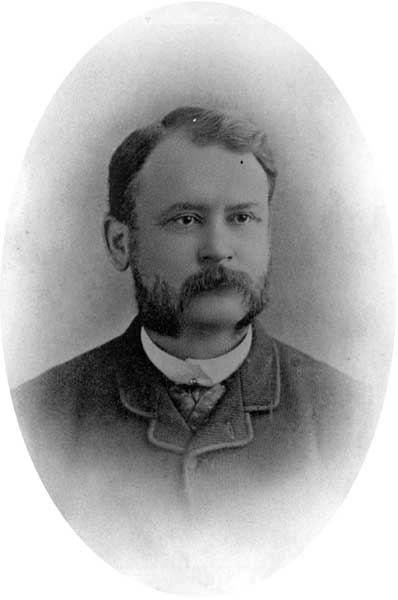
The last of Manitoba’s technically non-partisan premiers, David Howard Harrison first entered politics shortly after he moved to the province from Ontario. In 1883, he was elected in Minnedosa (as a Liberal-Conservative) in 1883, later serving as minister of agriculture, stastics and health under then-premier John Norquay.
Following Norquay’s resignation amid financial crises, Harrison attempted to hold the legislature together, but within weeks of taking office, his government lost a crucial by-election and he, too, resigned, leaving politics behind. His 24-day tenure as premier is the shortest in history, eclipsed even by interim premier Kelvin Goertzen in 2021.
Harrison died at 62 in Vancouver in 1905.
John Norquay
(1878-1887)
No party

John Norquay.
Manitoba Historical Society
If the NDP wins the election in October, Wab Kinew will become the first Manitoba premier of First Nations descent, but not the first Indigenous premier. That distinction goes to fifth premier John Norquay, who was of Anglo-Metis ethnicity.
The first premier to be born in what later became known as Manitoba, Norquay was elected to the High Bluff constituency in the first provincial election. In 1872, while still serving as a provincial cabinet minister, he made an unsuccessful run for the federal riding of Marquette.
In 1878, Norquay was called to replace the resigning Robert Atkinson Davis, and led the province through turbulent times, with clashes over language rights and railway development. Although he remained non-partisan throughout his tenure as premier, Norquay’s government was considered a de facto conservative party.
He was forced to resign in 1887 due to a series of financial scandals. Norquay died less than two years later at 48 in Winnipeg.
Robert Atkinson Davis
(1874-1878)
No party
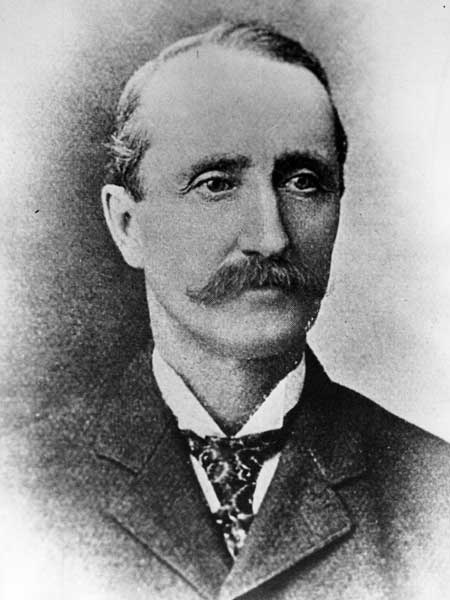
Robert Atkinson Davis.
Manitoba Historical Society
Born in what is now Quebec, Robert Atkinson Davis moved to Red River in 1870. He was first elected to office in 1874, defeating Hudson’s Bay Company commissioner Donald Smith in a by-election for the riding of Winnipeg and St. John’s.
Later that year, Davis was appointed provincial treasurer in the government of Marc-Amable Girard, and — as the only minister not to resign when Girard’s second tenure fell apart — was called on to form government at age 33.
A major accomplishment of Davis’ time as premier was lobbying for the planned transcontinental railway to run through Winnipeg rather than Selkirk.
After resigning in 1878, he moved to the U.S. to pursue a career in business, dying in Phoenix, Ariz. at 61 in 1903.
Marc-Amable Girard
(1871-1872)
(July-December 1874)
Premier of Manitoba
“Chief minister” of Manitoba

Marc-Amable Girard.
Manitoba Historical Society
Manitoba’s first — and thus far, only — leader to serve two non-consecutive terms, Marc-Amable Girard was first appointed as a leading minister in the province from 1871-72, and then elected premier for five months in 1874. He was the province’s first francophone premier.
Born in Lower Canada, now Quebec, Girard was sent to Manitoba at the behest of father of Confederation George-Étienne Cartier during the Red River Rebellion, and met with Louis Riel in 1870.
In Manitoba, Girard was appointed provincial treasurer, and was elected to represent St. Boniface East in the first provincial election. A year later, he was appointed to Canada’s senate, and served both roles simultaneously for a number of years.
After controversy over electoral redistribution based on language, a confidence vote led to the provincial government’s collapse, and Girard was asked to form government in late June, 1874. The first elected leader in Manitoba to choose his own cabinet — which had previously been the purview of the Lieutenant-Governor — Girard’s continued support for and communication with Riel contributed to his ouster by his anglophone colleagues in the legislature.
A few months after his resignation as premier, he was acclaimed in the 1874 provincial election as representative for St. Boniface, and again in 1879 for Baie St. Paul.
Girard remained a member of the senate until his 1892 death at age 70, and despite his prior relationship with Riel, he opposed the 1885 North-West Rebellion. He is buried in the St. Boniface Cathedral Cemetery.
Henry Joseph Clarke
(1872-1874)
Government leader
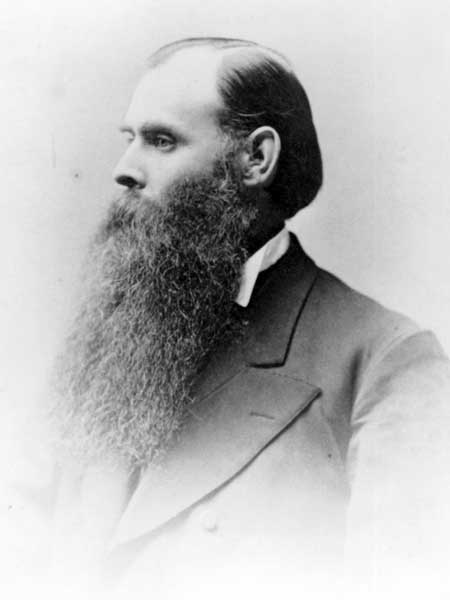
Henry Joseph Clarke.
Manitoba Historical Society
Irish-born Henry Joseph Clarke was a Montreal-based lawyer — who briefly lived in California to participate in the 1858 gold rush — before being encouraged to move to Manitoba in 1870 to help establish a provincial government.
He was elected in the riding of St. Charles, becoming the province’s first Attorney General, and played a large role in the development of Manitoba’s legal system, including its supreme court.
Like his predecessors, Clarke did not have the title of ‘premier’, although he was acknowledged as a leading minister and acted as a provincial representative to Ottawa.
Despite opposing Louis Riel, Clarke defended a group of his followers in court in the aftermath of the second Riel Rebellion.
He died in 1889 on a train near Medicine Hat, Alberta at age 56.
Alfred Boyd
(1870-1871)
Provincial Secretary of Manitoba

Alfred Boyd.
Manitoba Historical Society
Usually considered to be Manitoba’s first premier, Alfred Boyd never held that title and was instead the first Provincial Secretary of Manitoba, under Lieutenant-Governor Adams George Archibald.
Originally from England, Boyd moved to the Red River Colony, where he became a merchant. He was first elected in 1870 to the ‘Convention of Forty’ parliament called by Louis Riel, whose leadership he opposed.
When Manitoba became a province later that year, he was elected as representative of St. Andrew’s North in the province’s first official election. Amid criticism from his constituents, Boyd resigned from office in 1871.
After a brief return to politics, he resigned again in 1873 and is believed to have returned to his native England, where he died at 72 in 1908.








